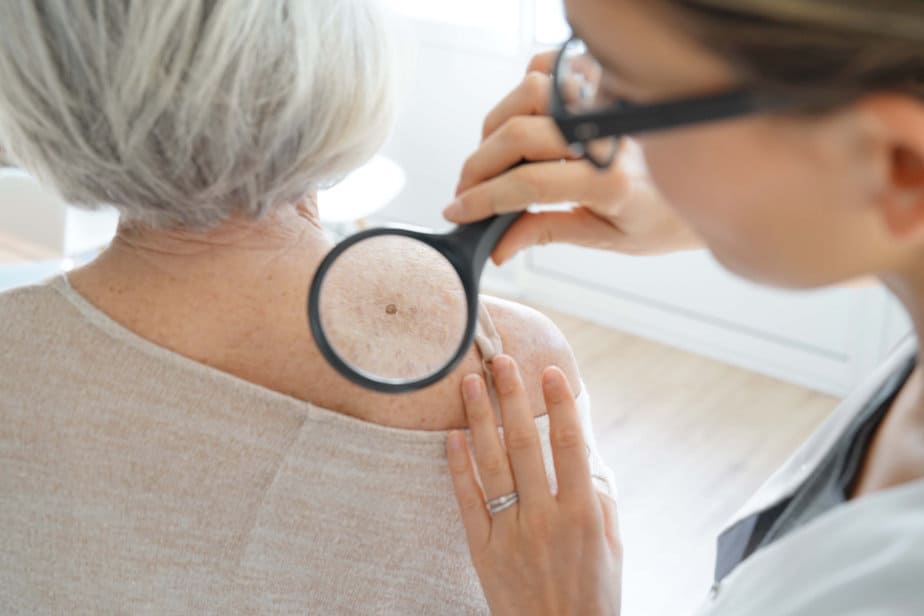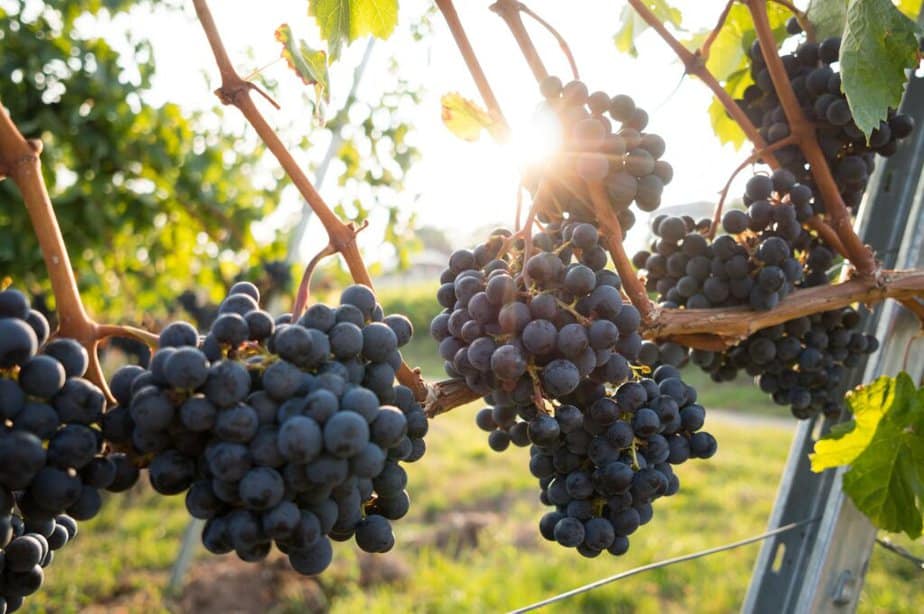A healthy diet with sufficient fruits and vegetables is key to preventing disease and promoting overall health. While the benefits are generally cumulative, research programs are interested in evaluating individual dietary components. This may help scientists better understand diets and consider personalized treatment. Experts already know that grapes contain resveratrol, a molecule linked to improved blood flow and protection against cancer. Overall, grape consumption may improve outcomes in atherosclerosis, inflammation, cancer, gastrointestinal health, central nervous system (CNS) effects, osteoarthritis, urinary bladder function, and vision.
Did you know some people may find that grapes protect from sunburn? Research recently published in the journal Antioxidants evaluated human grape consumption’s ability to alter skin damage from exposure to UV irradiation. If there is less skin damage from UV rays, this may suggest some protective effects against skin cancers, including melanoma. Overall, 1 in 5 Americans will develop skin cancer by the age of 70.

In this trial, 29 participants completed the study. All subjects were White/Caucasian, a majority being not Hispanic or Latino, and the majority being light-skinned.
The Study
First, participants limited themselves to a restrictive diet for 14 days. Then, the research team, led by lead author John Pezzuto, collected initial measurements and provided the participants with their grape supplement. Interestingly, to ensure the consistency and continuity of the experiment, participants did not consume actual grapes.
Instead, they were given a freeze-dried powder from grounded fresh seeded and seedless table grapes (red, green, and black). Participants added this powder to a glass of water twice daily for 14 days. The authors collected measurements again. Finally, the participants began the restrictive diet again for another 14 days and the authors performed final measurements.
Scientists measured sunburn by evaluating the skin for visible reddening 24 hours after exposure to UV radiation. They looked for the minimal dose of radiation needed to form uniform visible reddening up to the borders of the exposure site. They determined the sunburn for a subject before and after two weeks of consuming grape powder in water. Then, they used this data to determine whether the minimal dose needed to cause the sunburn had changed.
Results
Overall, nine subjects (31%) needed a higher dose to cause skin damage compared to baseline after grape consumption. The remaining 20 showed no change. Furthermore, three of the nine subjects’ skin responses to ultraviolet light continuously resisted sunburn two weeks after they stopped the grape consumption. The remaining six returned to baseline levels. These results suggest that some subset of the population may have an advantage in sunburn protection if they eat grapes.

The authors used the other collected measurements, including gut microbiome, blood, and urine samples, to help propose mechanisms behind sunburn resistance in some people. Microbiome and metabolomic results demonstrated differences between the UV-resistant population and the others.
Microbiome and Metabolomics
The nine UV-resistant subjects had different species in their microbiome and fewer species variations overall. As for metabolites, researchers found significant reductions in 2’-deoxyribonic acid, 3-hydroxyphenyl acetic, and scyllo-inositol after the grape diet. Because experts link free 2’-deoxyribonic acid elevation with UV radiation from the sun, reduced levels may signal less DNA damage in this population after they consume grapes.
The authors suggest that three genes GSTM1, GSTT1, and GSTP1 may influence the differences in skin reaction to UV light. Specifically, 20-50% of Caucasians inherit missing abilities to create proteins encoded by GSTM1 and GSTT1 genes, resulting in deleted null alleles. Experts know that these polymorphisms influence sensitivity to UV radiation. If they are deleted, they most likely play a role in reducing that sensitivity.
Finally, the three responders that continuously showed UV resistance 30 days after grape consumption showed additional microbiological taxonomy, enzyme, pathway, and metabolomic differences. Specifically, they saw reduced glucose, galactose, and glycolic acid and elevated glyceric acid in plasma. They also noted more lactic acid and less citric acid, and glycolic acid in urine.
Summary
The authors admit that while measurements like metabolomics are necessary to analyze a dietary component response, interpreting that amount of data can be challenging. However, they feel confident that their results, which mirror those of a previous study, show that a subset of individuals can acquire resistance to sunburns from UV irradiation through grape consumption. Finding ways to predict those individuals will take more research.
To this end, this group further evaluated mechanisms in this observation by demonstrating that unique microbiome and metabolomic characteristics correlate with the ability to acquire UV resistance. It also suggests a strong connection between the gut-skin axis and promotes research in other microbiome categories such as gut-brain, gut-liver, etc.
Pezzuto JM, Dave A, Park EJ, Beyoğlu D, Idle JR. Short-Term Grape Consumption Diminishes UV-Induced Skin Erythema. Antioxidants (Basel). 2022 Nov 30;11(12):2372. doi: 10.3390/antiox11122372. PMID: 36552580; PMCID: PMC9774720.
